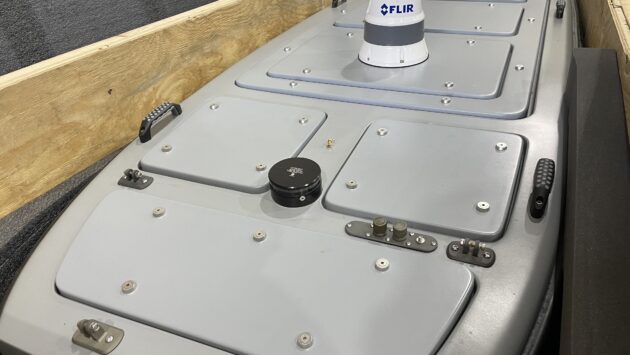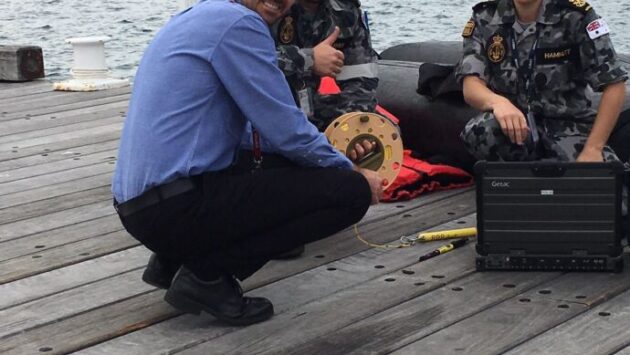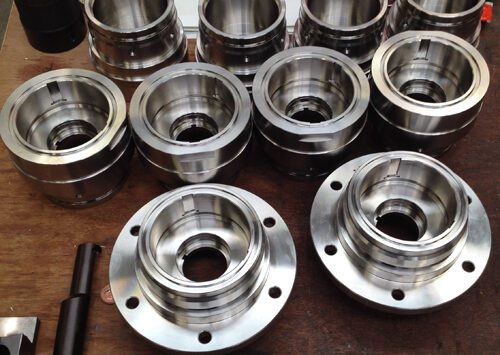Hydrographic Trends
Hydrographic Trends
UVS supported a combined Seminar/Workshop of the East Australian Region of the Australasian Hydrographic Society (AHS) in co-operation with the Survey & Spatial Sciences Institute (SSSI) on Thursday 12th February 2015 at Doltone House at Darling Harbour Sydney. Formally opening the conference, Vice Admiral Chris Ritchie AO RANR noted trends in hydrographic survey included laser scanning and establishment of a seamless common datum for sea and land survey.
Presenting for UVS, CTO Darren Burrowes, provided information on how robotics an automated systems were already changing the way that tasks such as hydrographic survey were completed in the ocean. The ocean represented the last frontier with large areas and harsh and dangerous conditions that made it a logical application for robotic technologies.
In collaboration between Liquid Robotics, Teledyne Odom Hydrographic and Caris the capability for autonomous shallow water multibeam survey has been demonstrated using a Wave Glider with integrated Odom MB1 Multi Beam Echo Sounder and Caris processing. This system provided the capability for all weather, long-duration operations with near real time processing of survey data onboard the Wave Glider. Accurate charting of the entire continental shelf was now a possibility using autonomous technology.
Combined laser and bathymetric survey were discussed using a demonstration on the Venice lagoon and the Costa Concordia survey that was conducted to support stabilisation and recovery of the ship following grounding in 2012. The generation of a seamless common datum by combining Teledyne Reson SeaBat 7125 sonar data with Optech ILRIS 3D MC Laser Scanner data was shown. The fast response and detailed data provided for the Costa Concordia was invaluable for the recovery team.
The Teledyne Oceanscience Z-Boat showed that for small coastal survey applications autonomy could be used to reduce the time and cost of survey and reduce the risk to personnel for access to hazardous areas. Developments in the integration of new instruments to the Z-Boat will include the Odom CV-1000 Single Beam Echo Sounder and the Odom MB1 Multi Beam Echo Sounder with completion expected for Ocean Business in April 2015.
A final development in automation was the Teledyne Oceanscience Underway CTD capability. By enabling conduct of underway CTD the time saved in a survey operation can be significant. David Donohue of IXSURVEY Australia Pty Ltd showed that in a survey conducted in the New Zealand Fjordland with a total of 422 CTD casts required that approximately 70 hours or 7 vessel days of time was saved on the survey with Underway CTD. This capability will be further enhanced with the new availability of fully automated CTD that will enable Underway CTD to be conducted continuously without operator intervention and so further reduce the manpower required for survey activities.
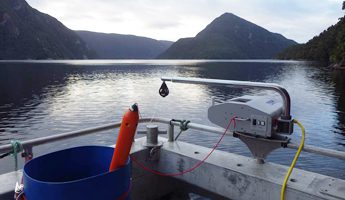 |
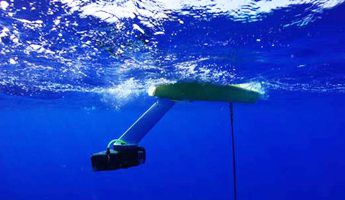 |
|
| Oceanscience Underway CTD deployed by IXSURVEY Australia
|
Teledyne Odom MB1 MBES mounted on an SV3 Wave Glider
|
|
 |
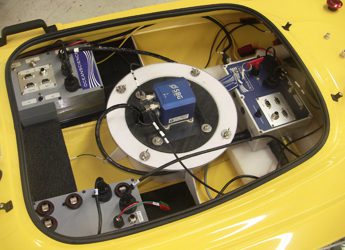 |
|
| Combined Laser and Sonar scan of Costa Concordia wreck |
MEMS INS supports the integration of MBES into Oceanscience Z-Boat |


